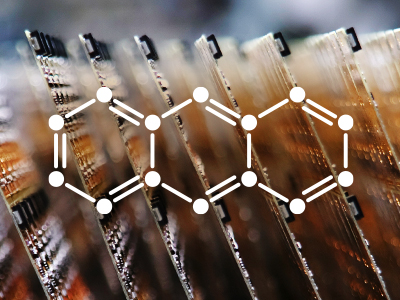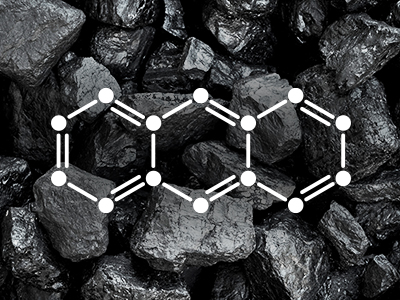Sustainable Development Background
Increasing awareness of environmental pollution in the 1960s and 1970s eventually led to discussions of sustainability and sustainable development. These discussions and the sustainability movements they helped launch have significant implications for manufacurers. In this article, we look at how manufacturers are impacted by the global push for sustainability, as well as strategies for its implementation.
United Nations Sustainable Development Goals
The United Nations General Assembly set the tone for sustainable development by adopting a new development programme for the post-2015 period. These Sustainable Development Goals (SDG) are a collection of 17 global goals aimed at improving the planet and the quality of human life around the world by 2030. The 17 SDGs and their 169 targets are a follow-up to the Millennium Development Goals (MDG) while seeking to surpass them.
- No poverty – End poverty in all its forms everywhere.
- Zero hunger – End hunger, achieve food security and improved nutrition and promote sustainable agriculture.
- Good health and well-being – Ensure healthy lives and promote well-being for people at all stages.
- Quality education – Ensure equitable quality education and promote lifelong opportunities for all.
- Gender equality – Achieve gender equality and empower all women and girls.
- Clean water and sanitation – Ensure availability and sustainable management of water and sanitation for all.
- Affordable clean energy – Ensure access to affordable, reliable, sustainable, and clean energy for all.
- Decent work and economic growth – Promote sustained, inclusive, and sustainable economic growth, full and productive employment, and decent work for all.
- Industry, innovation, and infrastructure – Build resilient infrastructure, promote inclusive and sustainable industrialization, and foster innovation.
- Reduced inequalities – Reduced inequality within and among countries.
- Sustainable cities and communities – Make cities and human settlements inclusive, safe, resilient, and sustainable.
- Responsible consumption and production – Ensure sustainable consumption and production patterns.
- Climate action – Take urgent action to combat climate change and its impacts.
- Life below water – Conserve and sustainability use the oceans, seas, and marine resources for sustainable development.
- Life on land – Protect, restore, and promote sustainable use of terrestrial ecosystems. Sustainably manage forests, combat desertification, halt and reverse land degradation, and halt biodiversity loss.
- Peace, justice, and strong institutions – Promote peaceful and inclusive societies for sustainable development, provide access to justice for all and build effective, accountable, and inclusive institutions at all levels.
- Partnerships for the goals – Strengthen the means of implementation and revitalize the global partnership for sustainable development.
The 17 SDGs are structured around the five pillars (5Ps) of the 2030 agenda: People, Planet, Prosperity, Peace, and Partnerships. The 5Ps highlight how the SDGs are an intertwined framework instead of a group of solo goals.
Countries are ranked by their overall score and the overall score measures the total progress towards achieving all 17 SDGs. The score can be interpreted as a percentage of SDG achievement. A score of 100 indicates that all SDGs have been achieved. Of the countries that have been scored, Germany takes 4th place with 83.36%; the UK 11th place with 81.65%; the USA 39th place with 75.91%; and India 112th place with 63.45%.
Sustainability in Manufacturing Industries
Sustainability has become an essential component of manufacturing practices in recent years. This is partly due to the increasing eco-consciousness of consumers, who are now more aware of the impact their purchasing decisions have on the environment. In response, businesses are making concerted efforts to reduce their carbon footprint and implement more sustainable manufacturing practices.
By implementing the below sustainability elements, a manufacturer can reduce their environmental impacts, manufacturing costs, and energy consumption while keeping their businesses profitable:
- Pollution prevention practices
- Product lifecycle management
- E-waste management
- Using eco-friendly materials
- Pollution control measures
- Pollution monitoring program
- Partnering with regulatory agencies
Sustainability Challenges for Manufacturers
Manufacturers grapple with a host of sustainability challenges, including the mounting pressure to demonstrate corporate sustainability initiatives amid heightened scrutiny from investors and banks. This scrutiny places a considerable burden on manufacturers as they navigate the complexities of strengthening partnerships with global suppliers while ensuring the availability of proven environmental data.
Simultaneously, the decision-making landscape is complicated by considerations of reshoring and carbon footprint reduction, prompted by supply chain disruptions and increased fuel costs. The need for efficient communication and collaboration across siloed manufacturing operations becomes crucial for successful sustainability initiatives, emphasizing the importance of an all-hands-on-deck approach. Manufacturers face the ongoing conundrum of balancing sustainability and profitability, with the perceived costs and potential consequences of cutting corners on sustainability measures raising significant concerns.
The Business Case for Sustainability
Transitioning towards sustainability not only aligns with sound business strategies but also offers companies an opportunity to tackle the underlying factors contributing to climate change. It also enables them to fortify their resilience against its consequences and fosters competitive growth. In simple terms, sustainable growth represents an achievable trajectory for a company, free from potential hurdles.
While a business that grows too quickly may find it difficult to fund growth, organizations that instill sustainability often become more successful in various measures, such as growth, increased profitability, and employee retention.
Sustainable Engineering
Sustainable systems engineering is a technical, transdisciplinary field focusing on how to design, integrate, and manage complex systems over their life cycles, with a goal of environmental, economic, and social sustainability. Sustainability in engineering is all about considering the long-term impact of engineering projects on the environment and society. It involves using resources efficiently, minimising waste, reducing carbon footprint, and creating a healthier living environment.
The Role of Engineering in Sustainable Development
Sustainable engineering resonates with various aspects of people’s lives encompassing water supply, waste management, food production, pollution reduction, housing, energy usage, transportation, restoration of natural environments, and enhancements in industrial processes. Sustainable engineering also focuses on using renewable energy sources, creating long-lasting, efficient systems that can be enjoyed by future generations.
Every aspect of the engineering discipline is engaged in sustainable design, employing numerous initiatives. A few of the more important ones are life cycle analysis (LCA), pollution prevention, design for the environment (DfE), design for disassembly (DfD), and design for recycling (DfR).
Conclusion
Consumers are becoming more aware of the environmental impact of their purchasing decisions nowadays. As a result, it’s affecting their choices. In response, manufacturers are making significant strides to lower their environmental impact through product lifecycle management, e-waste management, and implementing more sustainable manufacturing practices.
Manufacturers can be sustainable by implementing pollution prevention practices, product lifecycle management, e-waste management, using eco-friendly materials, implementing pollution control measures, implementing a pollution monitoring program, and partnering with regulatory agencies, manufacturers can reduce their environmental impact.





